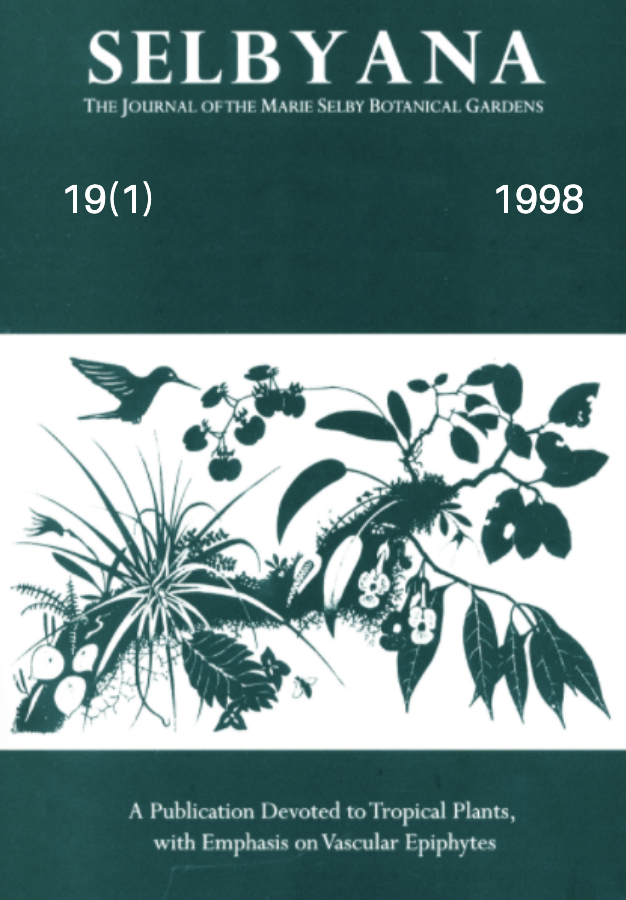Abstract
It is generally thought that pastures are inhospitable habitats for rain forest organisms. This largely results from (i) using low resolution images when studying fragmented landscapes and (ii) ignoring the actual characteristics of pastures. In a highly fragmented landscape of Los Tuxtlas, Mexico, numerous remnants of the forest canopy are left when pastures are created. Most of these are undetected in deforestation studies and dismissed as irrelevant in fragmentation studies. Using aerial photographs and field verification, we analyzed the spatial distribution and physical and biotic characteristics of isolated trees in pastures, a common landscape element in this region. In 30 pastures there were 98 species of isolated trees, 76 of which were primary rain forest species. Isolated tree density averaged 3.3 tree/ha (range: 0.4-11.9) and decreased with slope. Variation in the species composition, density and canopy physiognomy of isolated trees greatly increases the biotic and physical heterogeneity of pastures. These remnant trees function as 'stepping stones' for native fauna and 'safe sites' for flora, favoring their maintenance in fragmented landscapes. We propose that, together with other forest remnants, isolated trees in pastures compose a physically discontinuous but functional canopy in the Los Tuxtlas landscape. Por lo general se considera a los potreros como habitats inhóspitos para organismos de selva, lo cual se debe en gran parte al uso de imágenes con baja resolución, así como al desconocimiento de las características de los potreros. En un paisaje muy fragmentado de la región de Los Tuxtlas, México, encontramos numerosos remanentes de selva al interior de los potreros. La mayoría no son detectados en estudios de desforestación y son ignorados en los de fragmentación. Mediante fotografías aéreas y verificación en terreno, se analizan las características físicas y bióticas de árboles aislados en potreros, mismos que constituyen un elemento del paisaje común en ésta región. En 30 potreros fueron registradas 98 especies de árboles aislados, 76 de ellas de la selva madura. La densidad de árboles aislados promedió 3.3 árboles/ha (intervalo: 0.4-11.9), decreciendo con la pendiente del terreno. La variación en densidad, fisonomía de copas y especies de árboles aislados aumenta considerablemente la heterogeneidad biótica y física de los potreros. Estos árboles operan como 'sitios de relevo' para la fauna y como 'sitios seguros' para la flora nativas. Proponemos que en conjunto con otros remanentes de selva, los árboles aislados en potreros componen un discontinuo pero funcional dosel en el paisaje de Los Tuxtlas.
Open Access and Copyright Notice
Selbyana is committed to real and immediate open access for academic work. All of Selbyana's articles and reviews are free to access immediately upon publication. There are no author charges (APCs) prior to publication, and no charges for readers to download articles and reviews for their own scholarly use. To facilitate this, Selbyana depends on the financial backing of the Marie Selby Botanical Gardens, the hard work and dedication of its editorial team and advisory board, and the continuing support of its network of peer reviewers and partner institutions.
Authors are free to choose which open license they would like to use for their work. Our default license is the Creative Commons Attribution-NonCommercial 4.0 (CC BY-NC 4.0). While Selbyana’s articles can be copied by anyone for noncommercial purposes if proper credit is given, all materials are published under an open-access license with authors retaining full and permanent ownership of their work. The author grants Selbyana a perpetual, non-exclusive right to publish the work and to include it in other aggregations and indexes to achieve broader impact and visibility.
Authors are responsible for and required to ascertain that they are in possession of image rights for any and all photographs, illustrations, and figures included in their work or to obtain publication or reproduction rights from the rights holders. Contents of the journal will be registered with the Directory of Open Access Journals and similar repositories. Authors are encouraged to store their work elsewhere, for instance in institutional repositories or personal websites, including commercial sites such as academia.edu, to increase circulation (see The Effects of Open Access).
